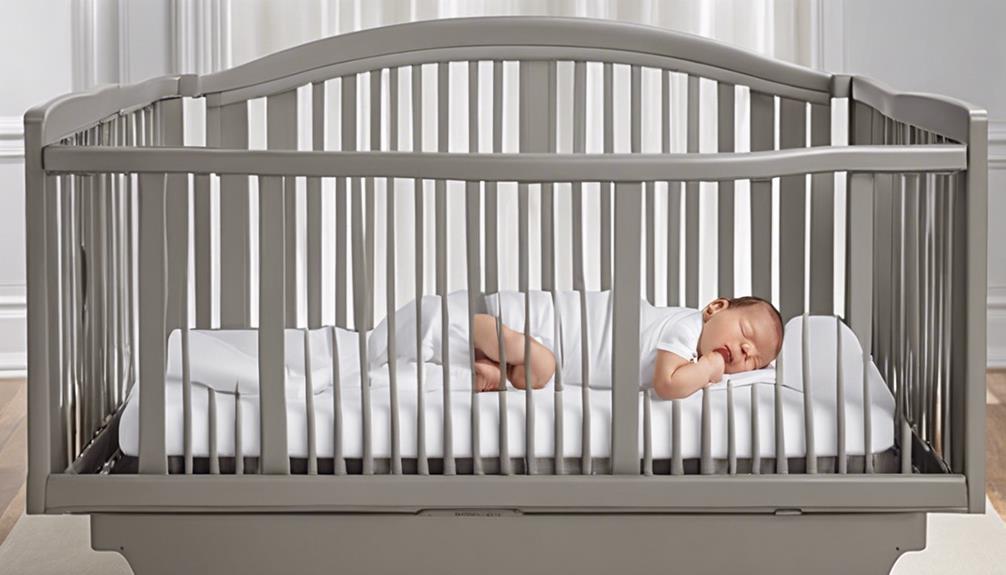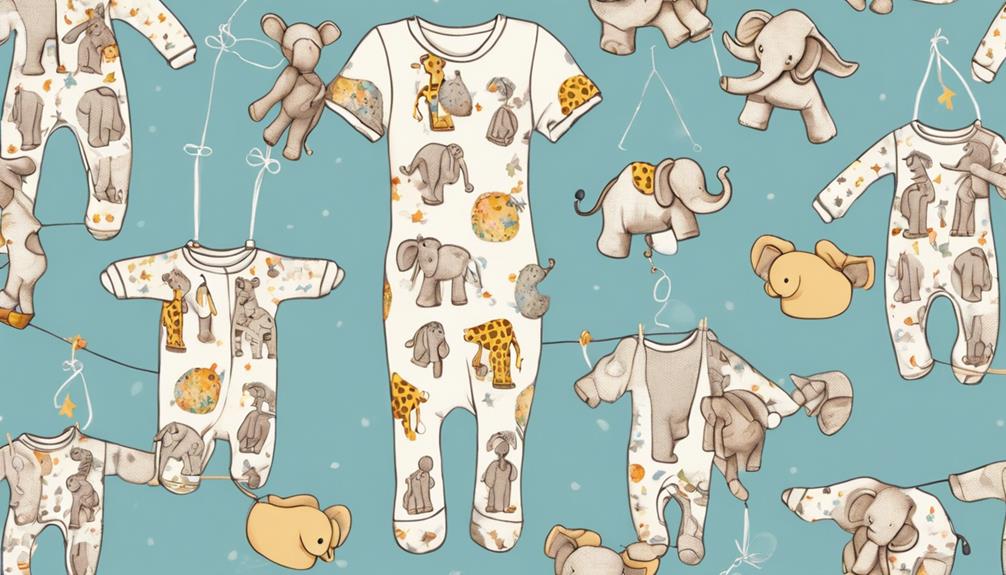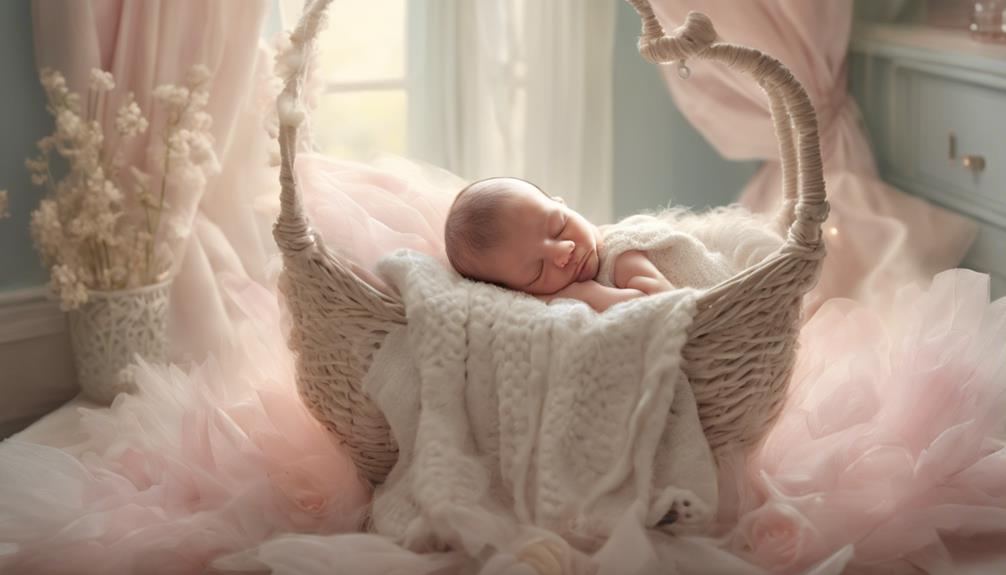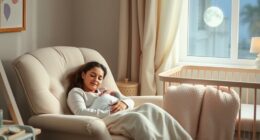As parents of a newborn, we recently experienced the challenge of ensuring our little one slept safely in the crib. One important aspect we discovered is the importance of crib safety tips to prevent potential hazards and promote peaceful sleep for our baby.
Understanding the essential guidelines for creating a secure sleep environment is key, but there's one particular aspect that often gets overlooked, impacting the safety of newborns. By uncovering this essential detail, you can greatly enhance your baby's sleep quality and overall well-being.
Key Takeaways
- Prioritize safety features like firm mattresses and secure hardware for your newborn's crib.
- Always place your newborn on their back in a crib without loose bedding or toys.
- Choose a crib that meets CPSC safety standards to reduce risks of SIDS and accidents.
- Regularly inspect the crib for gaps, missing hardware, and other potential hazards to ensure a safe sleep environment.
Choosing the Right Crib
When selecting the right crib for your newborn, prioritize safety features over aesthetics to create a secure sleep environment. It's important to consider CPSC safety standards, ensuring the crib meets the necessary guidelines for best safety.
Look for cribs with firm mattresses that fit snugly to reduce the risk of suffocation. Avoid using older cribs that may not adhere to current safety regulations, safeguarding your baby from potential hazards.
Check for smooth corner posts and secure hardware when choosing a crib, as these aspects are key in maintaining a secure sleep space for your little one.
Setting Up a Safe Sleep Environment
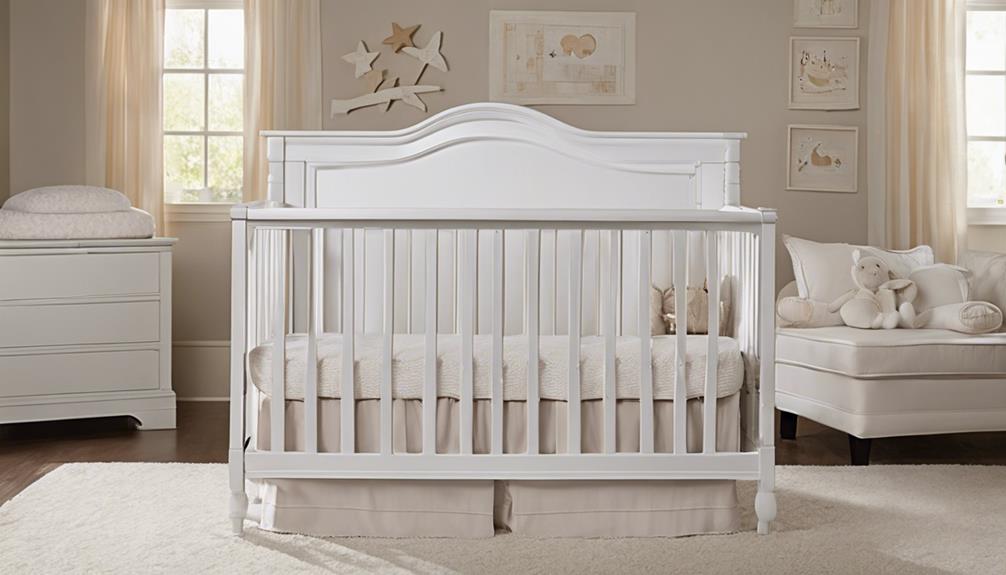
As we create a safe sleep environment for our newborn, ensuring the crib is set up correctly is essential for their well-being and security. Placing the baby on their back in the crib with a firm mattress is vital to reduce the risk of SIDS, sudden infant death syndrome.
It's important to avoid using pillows, quilts, comforters, bumper pads, or stuffed toys in the crib as these items can pose suffocation hazards. Instead, consider using a sleeper to keep the baby safe and warm during sleep. If using a blanket, position the baby with their feet to the foot of the crib to prevent any risks of suffocation.
Always use fitted bottom sheets specifically designed for cribs to maintain a safe sleep environment for the baby. By following these guidelines, we can create a secure and cozy space for our little ones to rest peacefully.
Crib Safety Standards Overview

Ensuring that cribs adhere to current safety standards is paramount for safeguarding infants during sleep. Cribs manufactured post-2011 are required to meet CPSC safety standards concerning corner posts, hardware, and size, ensuring infant safety. Older cribs may lack these essential features, potentially harboring hazards like lead paint or cracked wood.
Unsafe cribs with drop-sides, cutouts, or missing hardware pose significant risks to infants, underscoring the importance of selecting cribs with smooth corner posts and securely attached hardware. When choosing a crib, prioritize newer models that align with the latest safety guidelines to provide the safest sleep environment for your little one.
Safe Sleep Positioning for Newborns
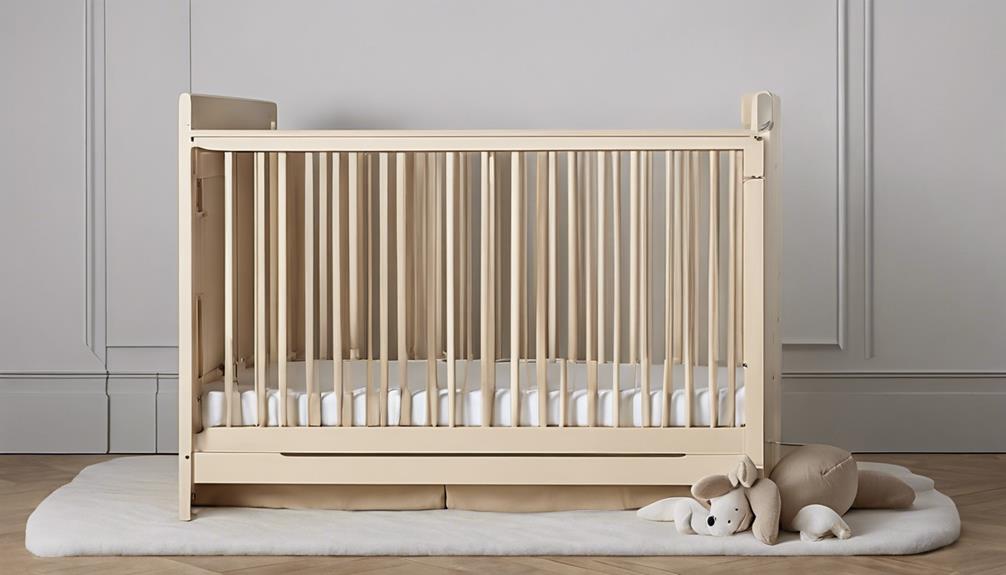
Prioritize placing newborns on their back to sleep to reduce the risk of SIDS and guarantee their safety. When it comes to safe sleep positioning for newborns, following these guidelines is essential:
- Back to Sleep: Always lay your newborn on their back to sleep. This position helps prevent SIDS and ensures optimal breathing.
- Firm Mattress: Use a firm mattress in the crib to provide a safe sleep surface for your newborn. A firm surface reduces the risk of suffocation and provides support for your baby.
- Avoid Loose Bedding: Ensure there are no loose bedding, pillows, or toys in the crib with your newborn. These items can pose suffocation hazards and increase the risk of accidents during sleep.
Crib Safety Checklist and Tips

Placing your newborn in a crib that meets safety standards is important for guaranteeing a secure sleep environment. When setting up your baby's crib, follow this crib safety checklist to create a safe space for your little one:
| Crib Safety Feature | Importance | Safety Tip |
|---|---|---|
| Firm Mattress | Reduces suffocation risks | Make sure it fits snugly with no gaps along the sides |
| Tight-fitting | Prevents entrapment risks | Test by fitting no more than two fingers between the slats |
| Spacing between Slats | Avoids entrapment hazards | Verify gaps are no more than 2 3/8 inches |
Double-check for missing hardware and make sure all screws and brackets are secure. Steer clear of cribs with footboard cutouts that could pose entrapment risks. Additionally, keep corner post height in mind, ensuring they don't exceed 1/16th inch to reduce the risk of injury. By adhering to these crib safety guidelines, you can provide your newborn with a secure and peaceful sleep environment.
Frequently Asked Questions
How Do I Make My Newborn Crib Safe?
We guarantee newborn crib safety by using a firm mattress, avoiding soft bedding, checking for proper assembly, maintaining slat spacing, and using fitted sheets. These steps reduce suffocation, SIDS, entrapment risks. Your baby's safety matters most.
Can a Newborn Safely Sleep in a Crib?
Absolutely, newborns can safely sleep in a crib. It's essential to choose a CPSC-approved crib that meets safety standards. Avoid old or recalled cribs. Always follow safe sleep guidelines like placing newborns on their back to reduce SIDS risks.
What Precautions Should Be Taken When Baby Is in Crib?
When baby is in the crib, we guarantee a safe sleep environment by placing them on their back, using a firm mattress, and keeping the crib bare. No pillows, toys, or loose bedding for a secure rest.
What Are the Safety Rules for Cribs?
We prioritize crib safety. Remember, slat spacing should be no more than 2 3/8 inches, corner posts must not exceed 1/16th inch, and the mattress must fit snugly. Regularly check for loose hardware and avoid cribs with cutouts.
Conclusion
In summary, it's important for parents to prioritize crib safety when it comes to their newborn's sleep environment.
By following the guidelines outlined in the newborn sleep guide, we can create a secure and comfortable space for our little ones to rest peacefully.
Remember, safety first – an ounce of prevention is worth a pound of cure.
Let's guarantee our babies sleep soundly and safely, free from any unnecessary risks.
